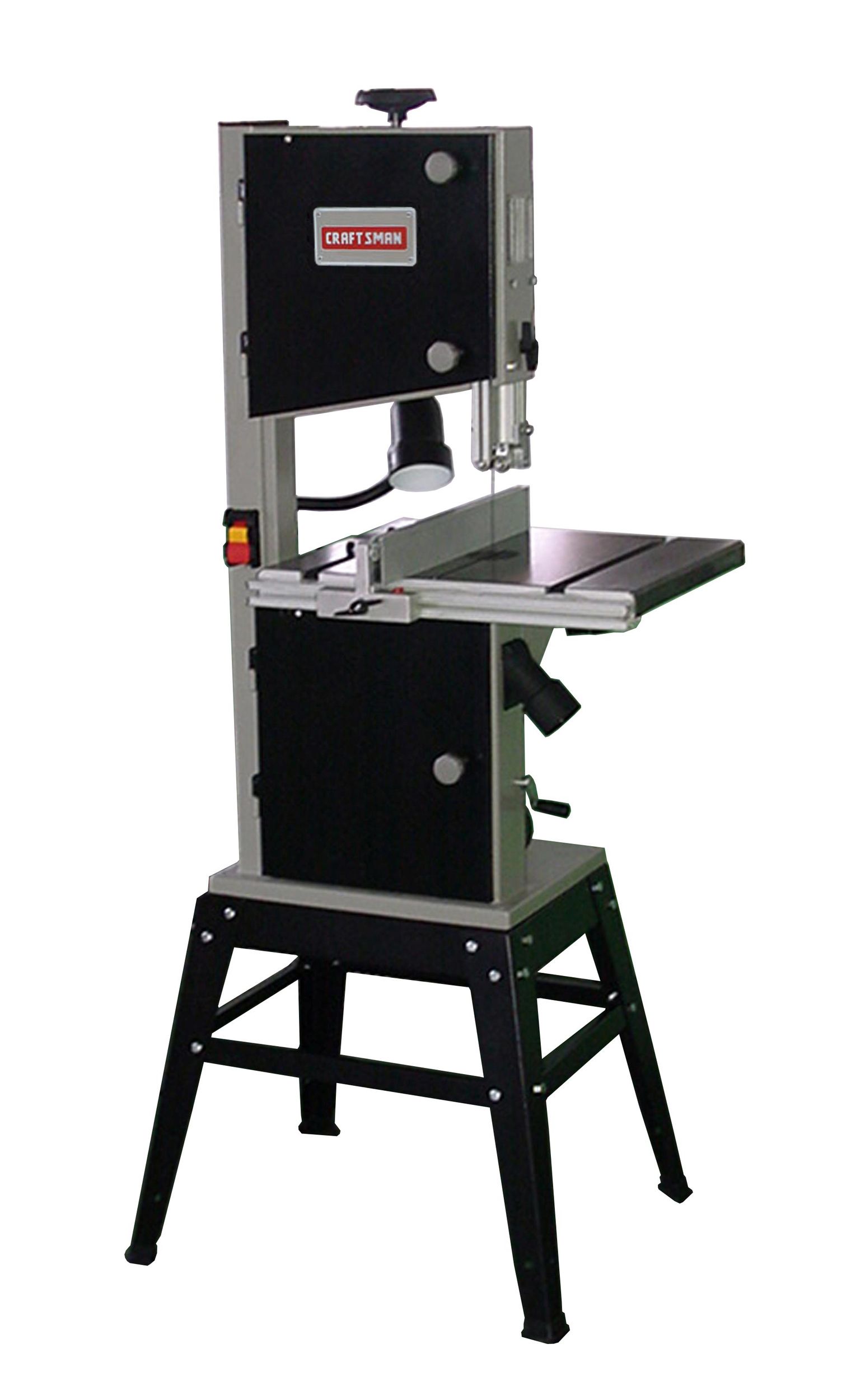Loading ...
Loading ...
Loading ...

• The type of material being cut determines number of
teeth which should be in contact with work
• For soft materials, the proper blade has between 6
to 8 teeth per inch
• When cutting hard materials, where shocking is more
detrimental, use a blade with 8 to 12 teeth per inch
• There should always be at least three teeth in con-
tact with cut to avoid shocking blade
• Blade shocking occurs when pitch is too large and
blade tooth encounters too much material This can
strip teeth from blade
• Blade manufacturers are prepared to supply informa-
tion about blades for specific applications
TYPE OF CUT
• Contour cutting is done by guiding workpiece free-
handed to produce curved shapes
• Beveled cutting is done by tilting saw table and using
proper work guide method
• Regardless of which work guiding method is used, a
workpiece which overhangs table by more than 5"
needs proper support
CONTOUR SAWING
• When contour sawing, use both hands to keep work-
piece flat against table and guided along desired path
• Avoid positioning hands in line with blade If hands
slip, they could contact blade
• Try to stand to front of the saw and use hands over
the portion of table which is to right of blade and
before cut
• Cut small corners by sawing around them Saw to
remove scrap until desired shape is obtained
BEVEL CUTTING
Refer to Figure 27, page 10
Perform bevel cutting by tilting table to desired degree
• Unlock table by loosening wing nut located on the
backside of the unit
• Tilt table to desired position
• Lock table in position by tightening wing nut
MITER GAUGE
• Use miter gauge (optional accessory) for securing
and holding workpiece at desired angle to produce
angled cuts Use scale to adjust gauge to desired
angle
WARNING: Never use miter gauge and rip fence at
the same time The blade might bind in the workpiece
Operator could be injured and/or workpiece could be
damaged
BLADE CLEANING BRUSH
Refer to Figure 34, page 14.
• Make sure that brush (Key No 75) is in contact with
blade to properly remove foreign particles from drive
wheel
Refer to Figure 34, page 14
Steps required to keep the saw in optimum operating
condition have been described under "Operating
Instructions" The Safety Precautions should be per-
formed before operation
For proper maintenance:
• Keep saw clean and dry Sweep off spots where
chips have collected
• Lubricate the unpainted surfaces with a light applica-
tion of medium consistency machine oil to prevent
corrosion after cleaning
• Replace dull blades and blades from which teeth
have been stripped A clean saw with a sharp blade
will yield the best cut
• Internal parts of the band saw have been completely
lubricated at the factory and do not need to be relu-
bricated
WARNING: Make certain that the saw is disconnected
from the power source before attempting to service or
remove any component
WARNING: Any attempt to repair the motor may cre-
ate a hazard unless repair is done by qualified service
technician
Repair service is available at your nearest Sears Store
CHANGING THE DRIVE BELT
• Release the saw blade tension by turning the blade
tension knob on the top of band saw counterclockwise
• Released the belt tension by using the crank handle
• Using C-clip pliers (not provided) remove the retain-
ing ring from the center of the lower wheel
• Carefully slide the lower wheel forward and at the
same time release the saw blade from this wheel
• Remove the old drive belt and fit the new belt
(ensure ribs in drive belt are seated correctly before
reassembling and tensioning the drive belt)
• Follow procedures for CHANGING AND ADJUSTING
THE SAW BLADE & TRACKING THE SAW BLADE,
before restoring power to the band saw and setting
up for use
12
Loading ...
Loading ...
Loading ...
